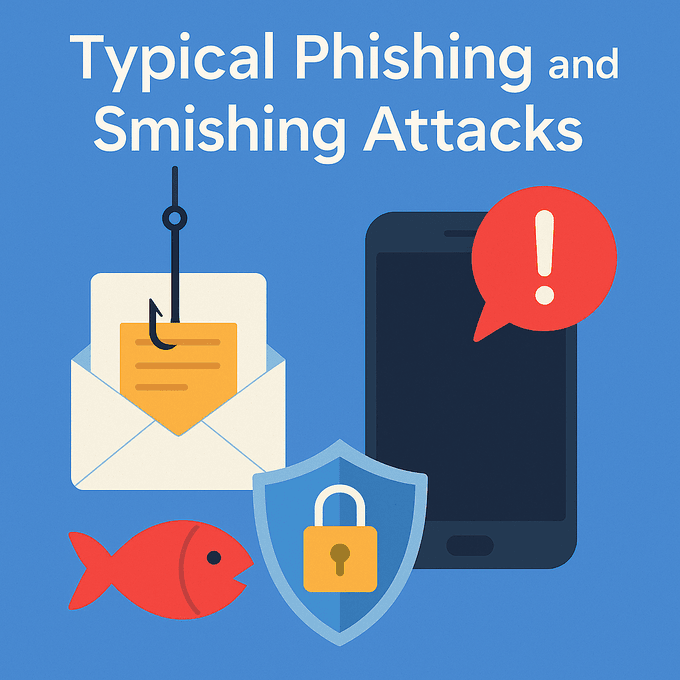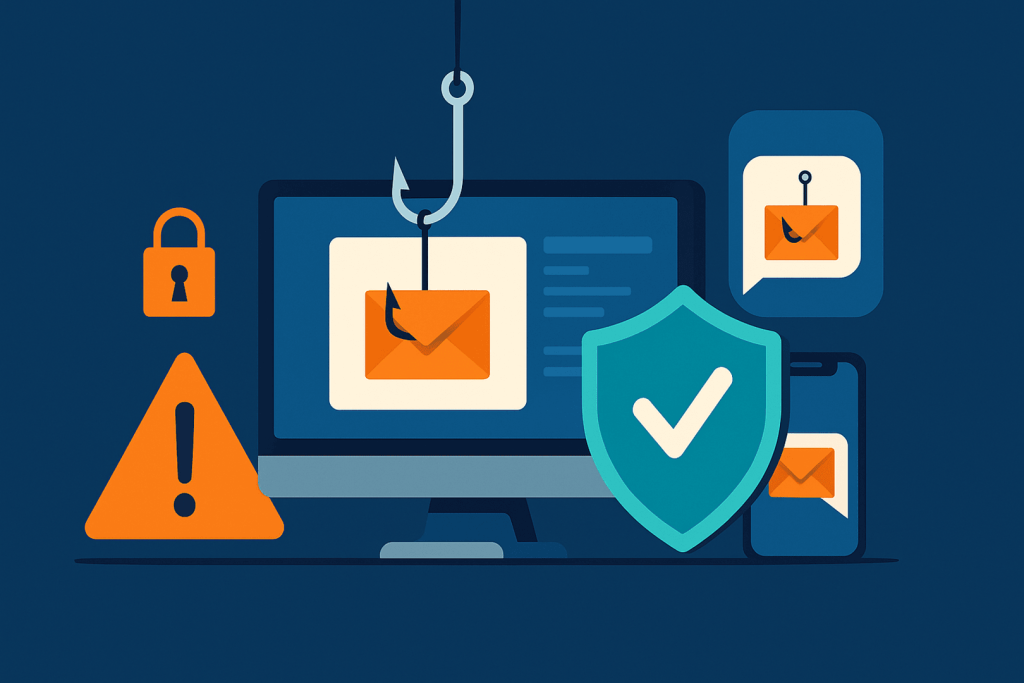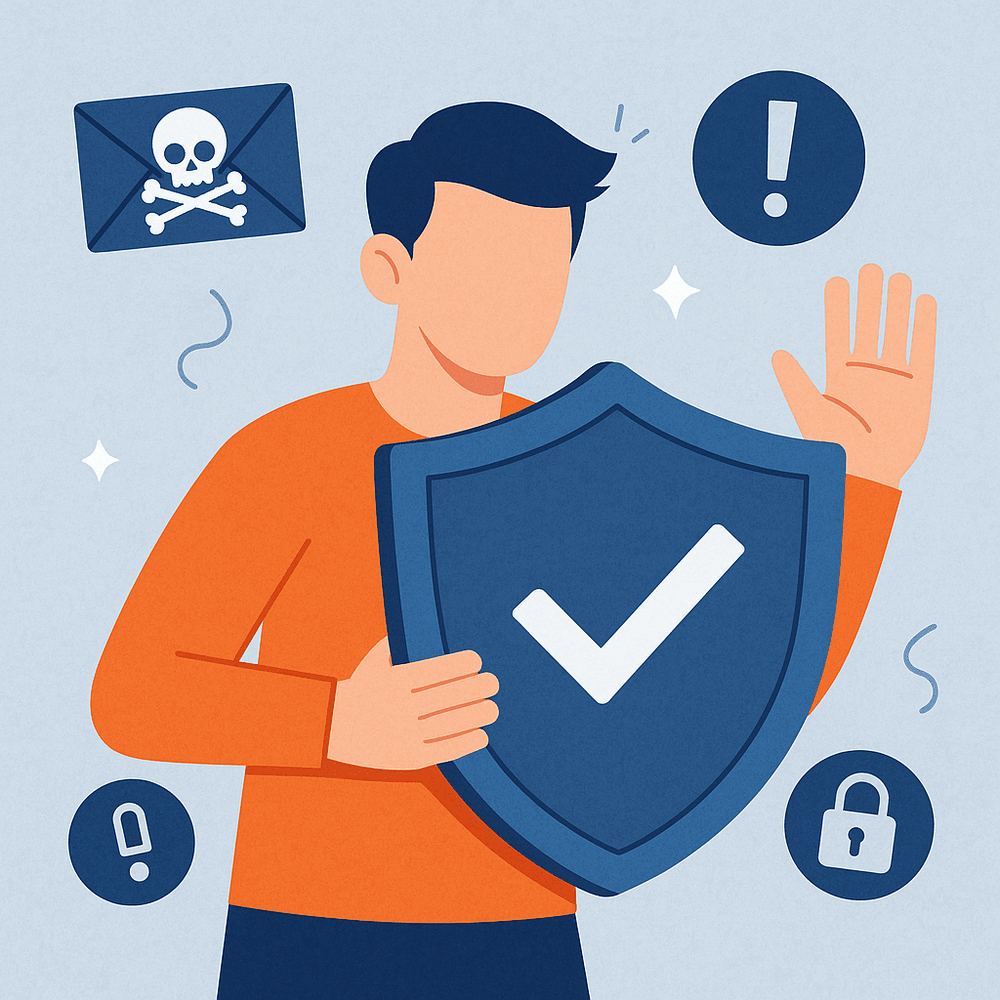
Typical Phising and Smishing Attacks and How to Combat Them
In our increasingly connected world, cybercriminals are getting more creative. Two of the most common and deceptive tactics are phishing and smishing. Both aim to trick you into revealing sensitive information — but understanding how they work can help you stay one step ahead.
What Is Phishing?
Phishing is a cyberattack that uses fake emails or websites to lure victims into sharing personal information like passwords, credit card numbers, or login details.
A phishing email might:
-
Pretend to be from your bank or delivery company.
-
Create urgency with subject lines like “Your account is suspended” or “Payment failed”.
-
Include a link that looks legitimate but actually redirects to a fraudulent website.

🧠 Example:
You receive an email from “PayPal Support” asking you to verify your account by clicking a link. The URL looks close to the real one — but isn’t. Entering your credentials here sends them straight to the attacker.
What Is Smishing?
Smishing (SMS + phishing) uses text messages instead of email.
Attackers send messages containing malicious links or urgent requests.
Typical smishing messages might say:
-
“Your package is ready for delivery — track here:”
-
“Unusual activity detected on your bank account. Click to secure it.”
-
“You’ve won a prize — claim now!”

Once you click the link, it may install malware on your device or direct you to a fake login page.
How to Protect Yourself
1. Verify Before You Click
Always double-check the sender’s email address or phone number. If something feels off, visit the company’s official website directly instead of using the provided links.
2. Look for HTTPS
Only enter personal information on secure websites (those starting with https://). Avoid sites that trigger browser warnings.
3. Enable Multi-Factor Authentication (MFA)
Even if your password is stolen, MFA can block attackers from accessing your account.
4. Keep Software Updated
Outdated browsers and apps are easier to exploit. Regular updates patch vulnerabilities.
5. Use Security Tools
Install reputable antivirus software and spam filters to detect suspicious messages.
6. Educate Your Team
In businesses, most attacks succeed because of human error. Regular cybersecurity awareness training dramatically reduces risks.

⚔️ Final Thoughts
Phishing and smishing thrive on urgency and deception — but awareness is your strongest defence.
If something feels suspicious, pause before clicking. Verify through official channels, keep your systems updated, and treat every unexpected message with healthy scepticism.
Cybersecurity isn’t about paranoia — it’s about prevention. 🛡️




